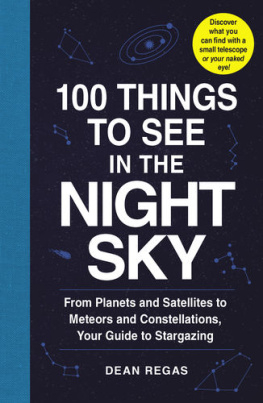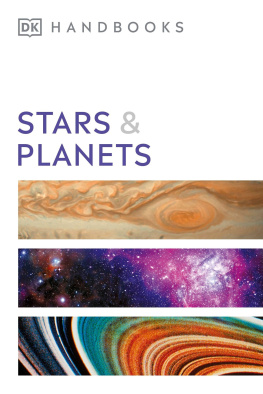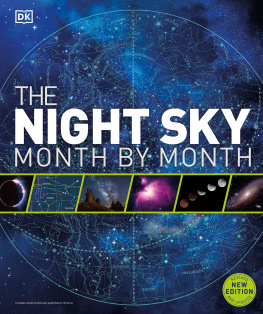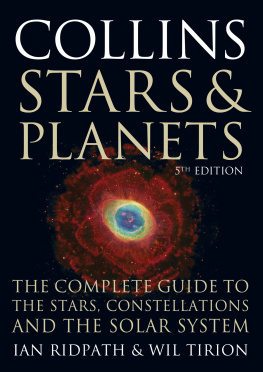Contents
Guide

Adams Media
An Imprint of Simon & Schuster, Inc.
57 Littlefield Street
Avon, Massachusetts 02322
www.SimonandSchuster.com
Copyright 2020 by Dean Regas.
All rights reserved, including the right to reproduce this book or portions thereof in any form whatsoever. For information address Adams Media Subsidiary Rights Department, 1230 Avenue of the Americas, New York, NY 10020.
This Adams Media hardcover edition June 2020
ADAMS MEDIA and colophon are trademarks of Simon & Schuster.
For information about special discounts for bulk purchases, please contact Simon & Schuster Special Sales at 1-866-506-1949 or .
The Simon & Schuster Speakers Bureau can bring authors to your live event. For more information or to book an event contact the Simon & Schuster Speakers Bureau at 1-866-248-3049 or visit our website at www.simonspeakers.com.
Interior design by Colleen Cunningham and Julia Jacintho
Interior illustrations by Eric Andrews
Photographs 123RF/Andrey Armyagov, Viktar Malyshchyts, fabio formaggio, Andrey Nyrkov; Getty Images/aapsky, allou, Cylonphoto, davidhajnal, Eerik, Elen11, ewg3D, FlashMyPixel, GRAWLLF, hadzi3, heibaihui, ilbusca, incposterco, juan lpez, leolintang, Martin Holverda, Mike Ries, Morrison1977, Muhammad Abu Dzar Al Ghifari, Nick_Pandevonium, parameter, Paul Wilson, Riekkinen, seebest, shaunl, Sjo, standret, Stocktrek Images, wisanuboonrawd, Xiong Yi; NASA/ NASA/Aubrey Gemignani, USGS, JPL-Caltech/Space Science Institute, NASAs Scientific Visualization Studio
Cover design by Frank Rivera
Cover images 123RF/Aleksandra Alekseeva
Library of Congress Cataloging-in-Publication Data has been applied for.
ISBN 978-1-5072-1381-0
ISBN 978-1-5072-1382-7 (ebook)
Many of the designations used by manufacturers and sellers to distinguish their products are claimed as trademarks. Where those designations appear in this book and Simon & Schuster, Inc., was aware of a trademark claim, the designations have been printed with initial capital letters.
Contains material previously published in the following title published by Adams Media, an Imprint of Simon & Schuster, Inc.: 100 Things to See in the Night Sky by Dean Regas, copyright 2017 by Dean Regas, ISBN 978-1-5072-0505-1.
THE 100 THINGS TO SEE IN THE NIGHT SKY
Introduction
Constellations. Stars. Planets. Nebulas. Satellites.
The universe is full of wonders beyond our imagination. And while much of whats out there in space can only be seen by powerful telescopes or theorized about by professional astronomers, there are many things you can see in the night sky just by walking out your door and looking up.
In 100 Things to See in the Night Sky youll find 100 entries, each telling you about particular objects in the night sky that you can find with either your naked eye, binoculars, or a backyard telescope. Each entry tells you what type of heavenly object you are looking for (planet, star, etc.), how hard it is to find, what the item looks like and its mythology, and where and when to look for it. Youll also find a variety of star maps scattered throughout the entries that will show you exactly where to look when you turn your eyes toward the stars.
The tips, techniques, and informative bits that youll find in the book are the same ones that I used when I first started heading outside every clear night to let the sky become my classroom. Theyre the same tips that turned me into a starstruck astronomer. Hopefully theyll do the same for you, and help you fall in love with the heavens!
But what exactly will you find in this book? Well, first youll learn how to safely observe the Sun, take in sunsets and sunrises, chart the seasons, and observe sunspots. Then youll explore the phases and features of the Moon and uncover the hidden secrets of the five planets closest to Earth: elusive Mercury, dazzling Venus, ruby-red Mars, giant Jupiter, and spectacular Saturn.
Then you will delve into the heart of the book and study the art of stargazing. You will learn how to identify major stars and constellations throughout every season of the year. From beginner star patterns like the Big Dipper and Orions Belt to more challenging constellations like Delphinus, the Dolphin, and Aries, the Ram, you will soon be able to recognize dozens of stars in the night sky and retell their ancient mythological stories.
Finally, youll discover the tricks to observing man-made satellites and supreme heavenly shows such as meteor showers and eclipses.
And, in case youre not sure exactly what you need to do, youll find a section packed with information on ideal stargazing locations and sky conditions, what type of equipment you need (in some instances, you just need to use your two eyes and bare hands), the best time to stargaze, and more. So, whether youre looking to learn about the night sky on your own or are looking to get your kids excited about what lies in the skies above, this book is for you. I challenge you to go outside and find every one of the night sky objects detailed here. When you do that, you may be converted to the stars like me, and you may find that youre an astronomer too!
How to Use This Book
The universe is yours to behold and this book can be your beginners guide. It will focus on 100 of the most amazing astronomical objects that you can see in the night sky. Youll find basic information and tips to locate each individual object, often with the help of accompanying charts and graphics. But some general rules and guidelines are necessary to start properly. Lets talk about viewing locations, sections of the sky, various viewing conditions, and any equipment you may have or want to get.
LOCATION, LOCATION, LOCATION
This book is intended mainly for viewing audiences in:
- The mainland United States
- Southern Canada
- Northern Mexico
- Europe
- North Africa
- Most of Asia
It is designed to help you view the night sky from the mid-northern latitudes, which means that if youre living or traveling between 25 and 55 degrees north latitude, this is the book for you. Your perspective on the heavens does not change much when you travel east to west, but it does change when you trek north or south. There will be some useful information in this book no matter where you live, but my observing tips and star charts are mainly geared for stargazers living in the mid-northern latitudes.
Break Up the Sky
That said, no matter where you are on Earth, if you stargaze long enough you will notice that the stars, constellations, planets, and the Sun and Moon slowly move across the sky. Hour by hour, minute by minute, they shift as one body. Ancient astronomers pictured the dome of heaven circling around an unmoving Earth, as if the gods were manipulating a great wheel behind the scenes to make everything rise and set and circumnavigate the globe once a day.












